Using USAspending.gov to Track Federal Award Obligations & Outlays: A Guide for GFOA Members
Using USAspending.gov to Track Federal Award Obligations & Outlays: A Guide for GFOA Members
Using the Advanced Search Function
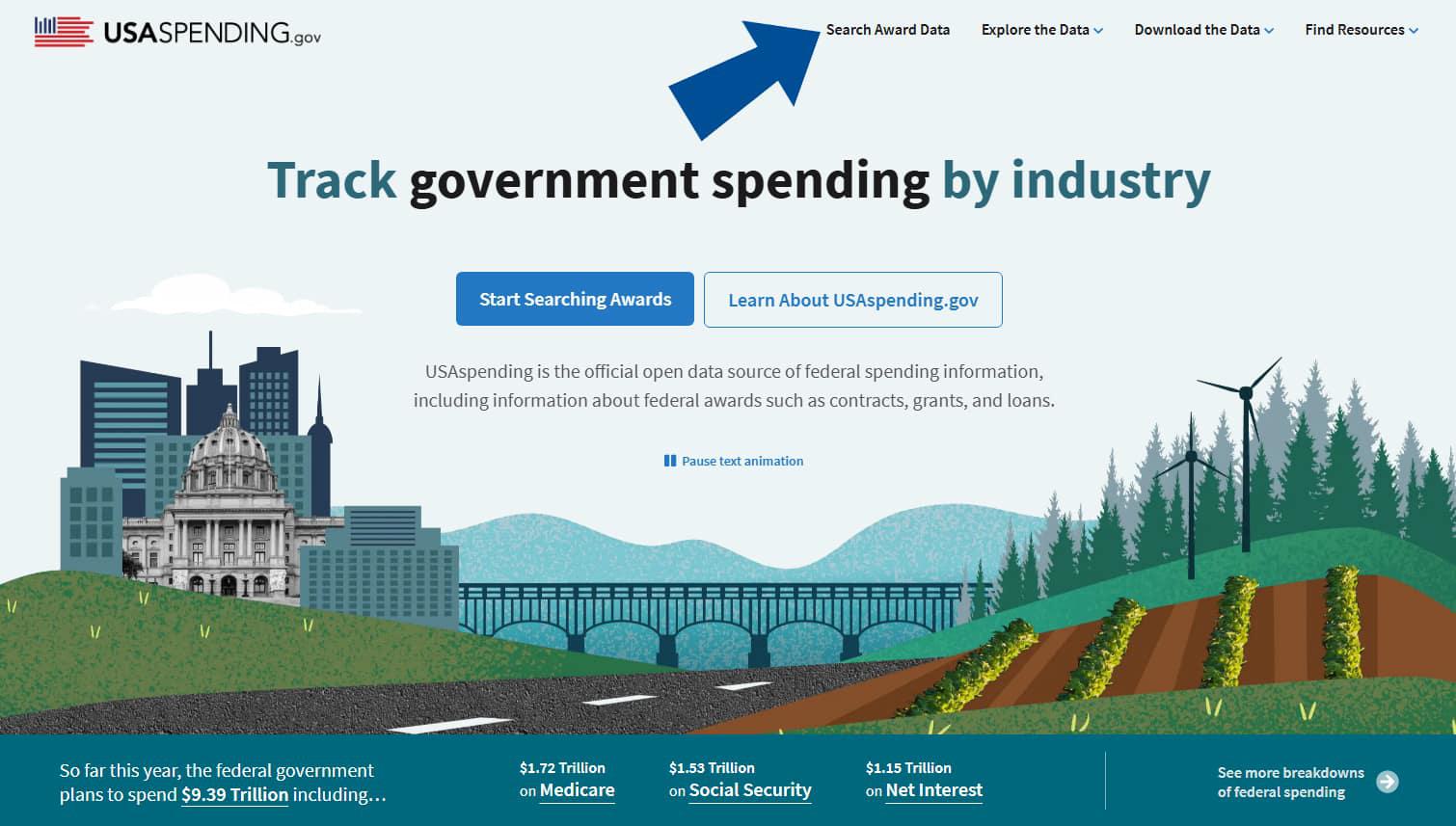
USAspending contains federal spending data across all departments and agencies spanning several fiscal years. To access information on federal budgetary resources, obligations and outlays, you can use the advance search function to filter through the available data based on several award features and variables. Multiple filters can be used as once.
TIP: the profiles contained under the “Explore Category” contain high-level data. The advanced search function is best for looking up specific awards or programs.
Please note, the advanced search function on USAspending.gov only pulls information on prime awards, or federal financial assistance or cost-reimbursement contracts awarded directly from a federal agency to a non-federal entity. In these cases, the non-federal entity is also known as a prime recipient.
The below outlines the information included in the most useful search features to access federal award information based on grant award information you may already have or can easily access.
TIP: if your award ID is unknown, you can access it by using the advanced search filters.
Key Search Filters
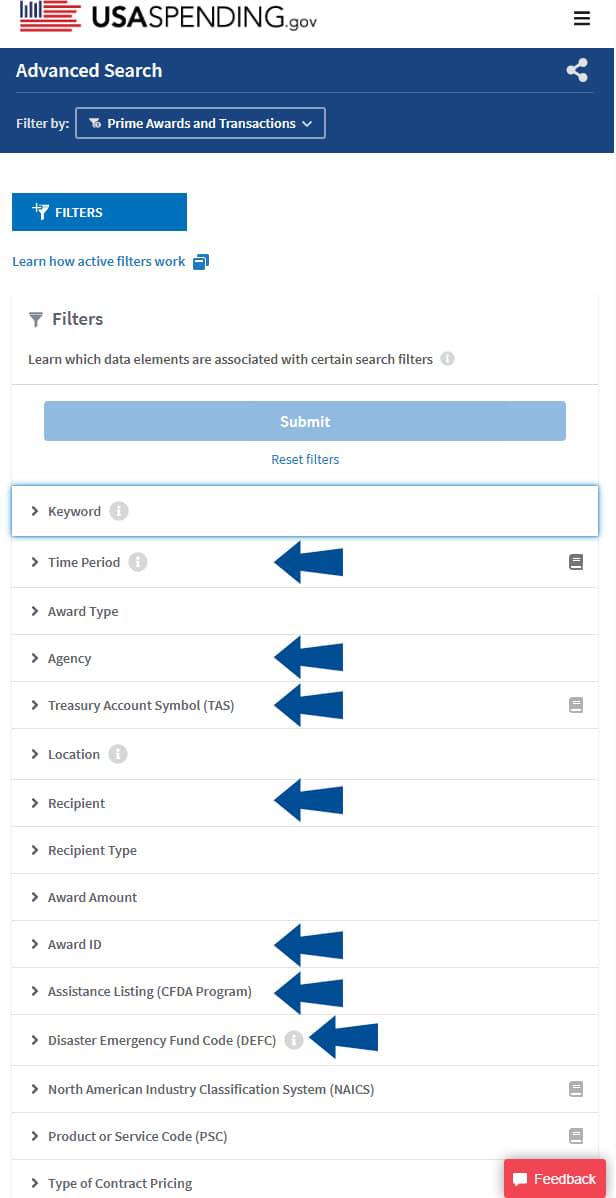
- Time Period: the federal fiscal year (September 30 – October 1) when a federal transaction occurred. Filtering by fiscal year will include information on all prime awards that occurred across all federal agencies that year, including recipient and award ID.
- Agency: the federal agency that funds and administers the award. In most cases the agency that funds and administers the award are the same, however small agencies sometimes require a larger federal entity to administer the award. Filtering by agency will include information on prime awards made under all the accounts housed in that agency, including recipient and award ID.
- Treasury Account Symbol (TAS): identification codes assigned by Treasury and OMB to each appropriation, receipt and fund account. When funds are released to federal agencies via an apportionment from OMB, they are distributed at the Treasury account level. All federal financial transactions are classified by a TAS (ex. 068-2022/2031-0103-000). A TAS includes:
- an agency identifier (AID), assigned by Congress (ex. 068-2022/2031-0103-000)
- the period of availability (BPOA/EPOA), including the first and last federal fiscal years an agency can incur obligations or in the case of indefinite periods, ‘X’ (ex. 068-2022/2031-0103-000)
- a main account code (MAIN), identifying the Treasury account type and purpose (Ex. 068-2022/2031-0103-000)
- a subaccount code (SUB), identifying the Treasury sub-account or in the case of no sub-account ‘000’ (ex. 068-2022/2031-0103-000)
Filtering by TAS will be more granular than searching by federal account (see “Explore by Federal Account” section) and include information on all prime awards across several agency activities, financial assistance programs and award listings that are included in the Treasury account.
- Disaster Emergency Fund Code (DEFC): an accounting code assigned by OMB that is used to track supplemental funding for disasters and emergencies. Each DEFC corresponds with at least one spending bill enacted by Congress. COVID-19 related funding and Infrastructure Investment and Jobs Act (IIJA; P.L. 117-58) authorized resources are tracked with a DEFC. Filtering by DEFC will include all prime awards funded with disaster and emergency spending categorized under that code, which could include spending authorized across several bills, including recipient and award ID.
- Assistance Listing: formerly known as “CDFA programs,” assistance listings are unique 5-digit numbers assigned to each federal financial assistance programs that generally describe the program activity (ex. 20.205 – Highway Planning and Construction). Assistance listing numbers are often found on grants.gov and Notice of Funding Opportunity (NOFO) documents. They are also catalogued and can be searched on SAM.gov. If a federal program has an assistance listing, it generally means the funds have been made available for award. However, assistance listings remain the same across fiscal years and do not change based on new funding or agency objectives and could include several funding opportunities. Filtering by assistance listing will include information for all prime awards made under that listing, including recipient and award ID.
- Recipient or Unique Entity Identifier (UEI): alphanumeric code created in the System for Award Management (SAM.gov) that is used to uniquely identify federal grant awardees. Filtering by recipient or UEI will include information for all prime awards involving that recipient across federal agencies and accounts including award IDs.
- Award ID: a unique identification number assigned to each individual award, such as contracts, grants, insurance or direct payments. For federal financial assistance, this is typically a Federal Award Identification Number (FAIN) which can be located on an award notice. Filtering by award ID will include information, including obligations and outlays, for a specific federal award to a specific recipient.
TIP: If you know the FAIN for the federal award you are searching, filter by Award ID for quick access to award profiles and grant summaries.
Explore by Federal Account

By using the explore by federal account feature, users can access spending profiles that will include information on all prime awards across all Treasury accounts grouped in that federal account.
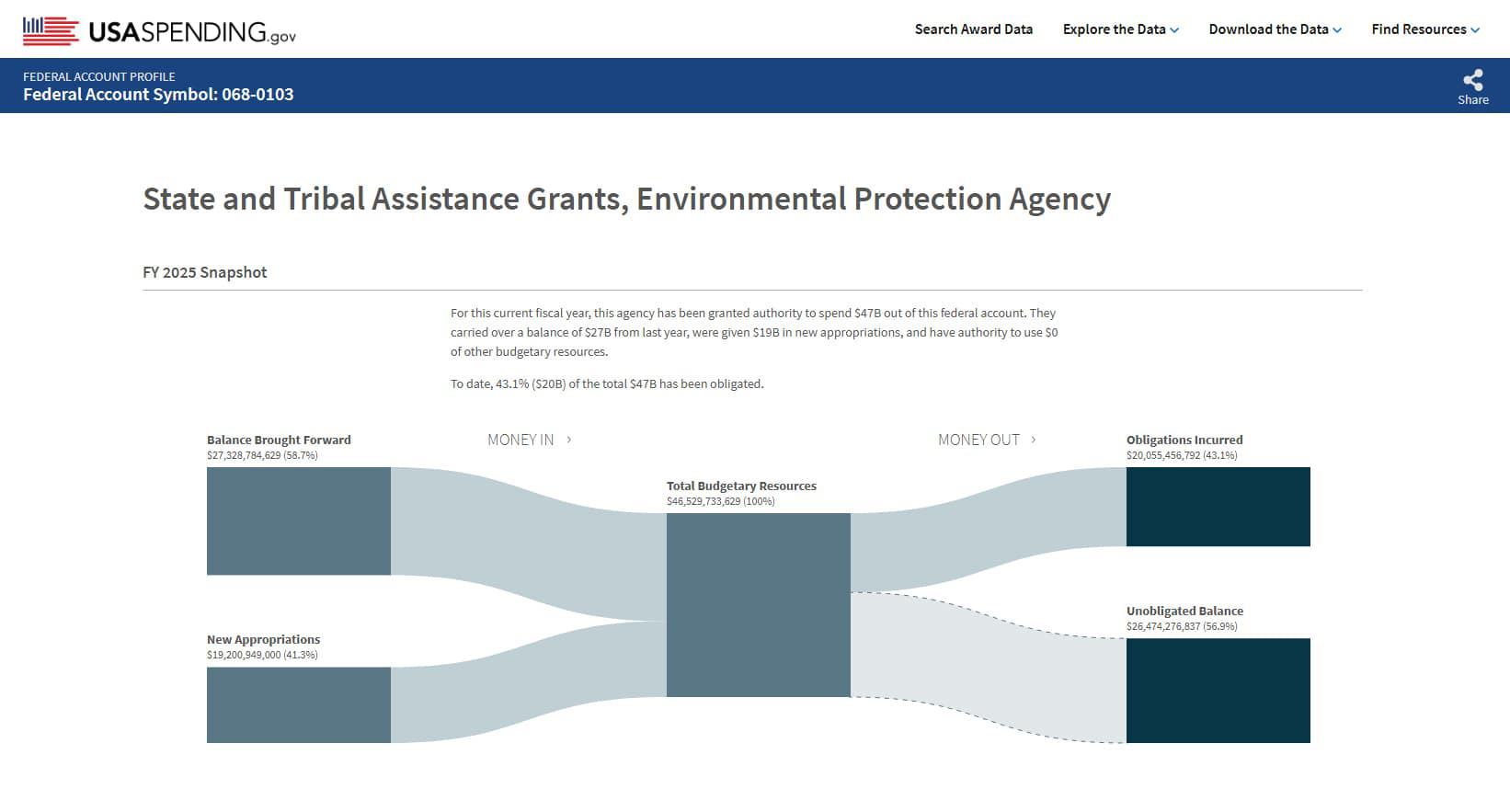
Federal Accounts are sets of related Treasury accounts that share a common agency identifier (AID) and main account code (MAC) (ex. 068-0103 for Treasury accounts under Environmental Protection Agency State and Tribal Assistance Grants). It is similar to a TAS but does not include a time period or subaccount. Federal accounts can be found in Treasury’s FAST Book.
The data for that federal account can be further filtered by time period, program class (the type of award) or the program activity (specific agency activity or project found in financing schedules of the U.S. Budget).
These profiles additionally list the various treasury accounts that are included in the federal account. The listed TAS on the federal account profile can be used in the advanced search feature to filter data to locate recipient and award ID information.
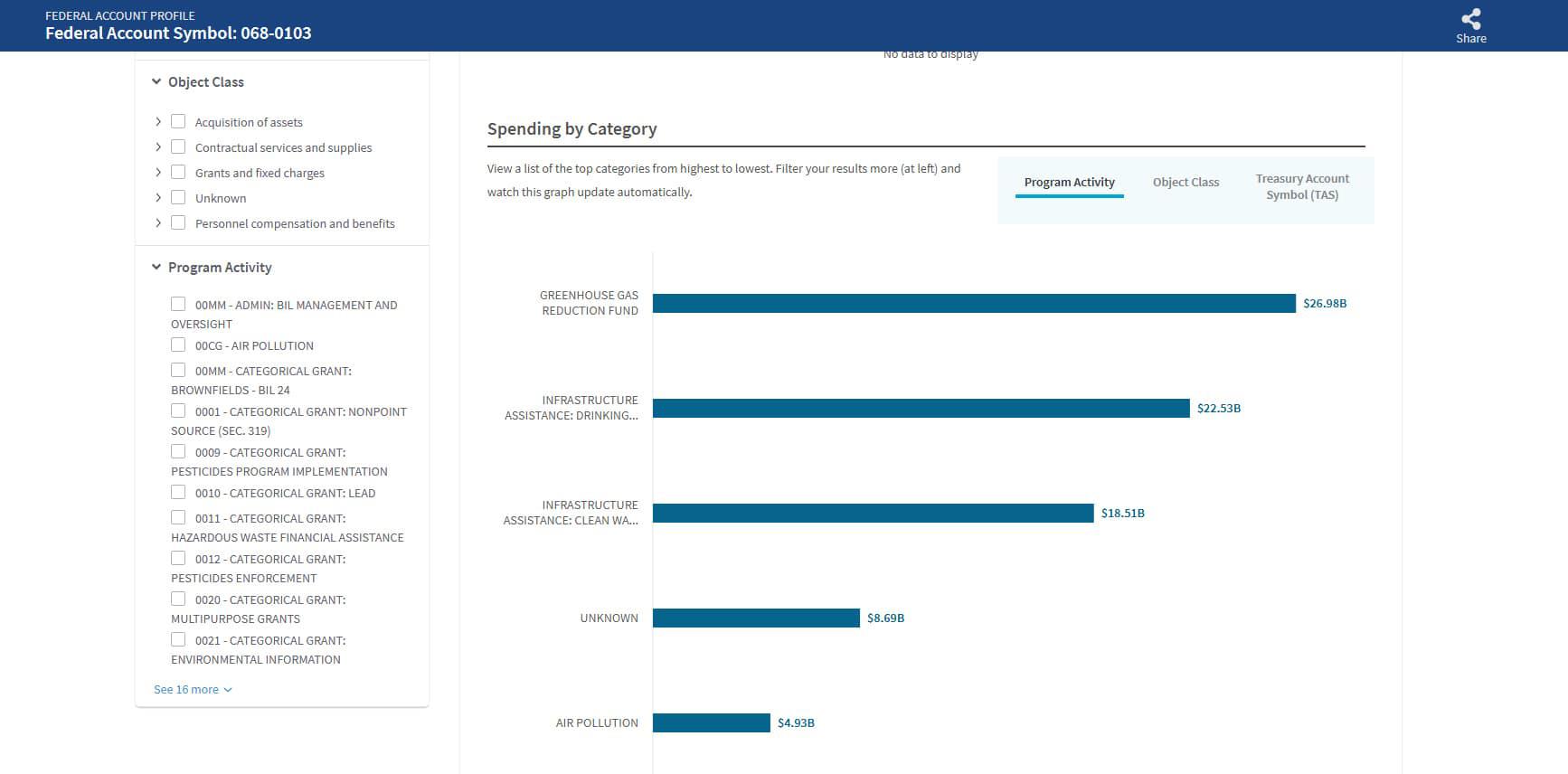
Accessing Award Profiles & Grant Summaries
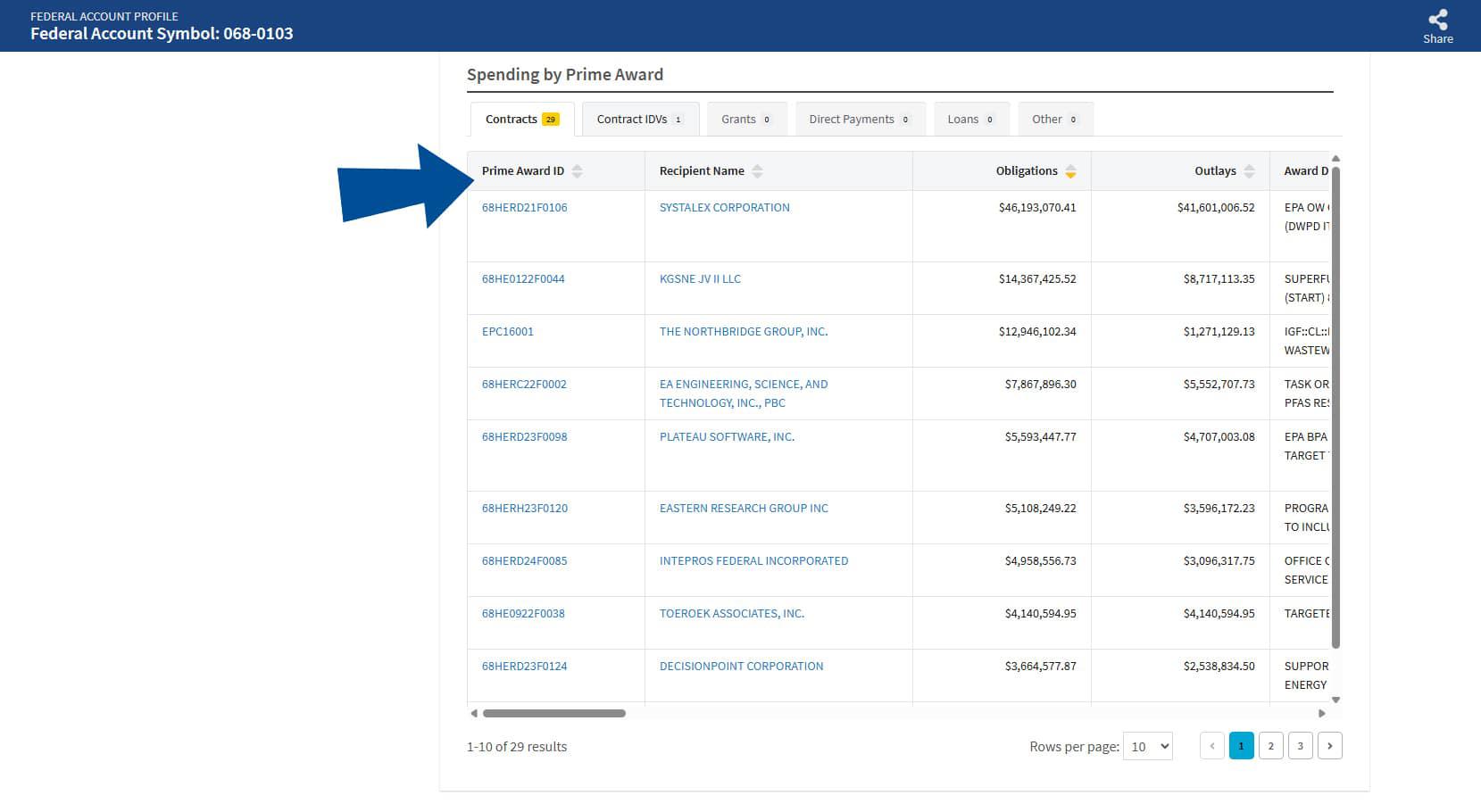
After finding the prime award you are looking to use the outlined filters in the advanced search button, click the hyperlinked award ID number listed under “Prime Award ID” or the left most column of the award results table.
This will take you to the grant award profile that lists information on funding obligations and outlays and all transactions associated with that award.
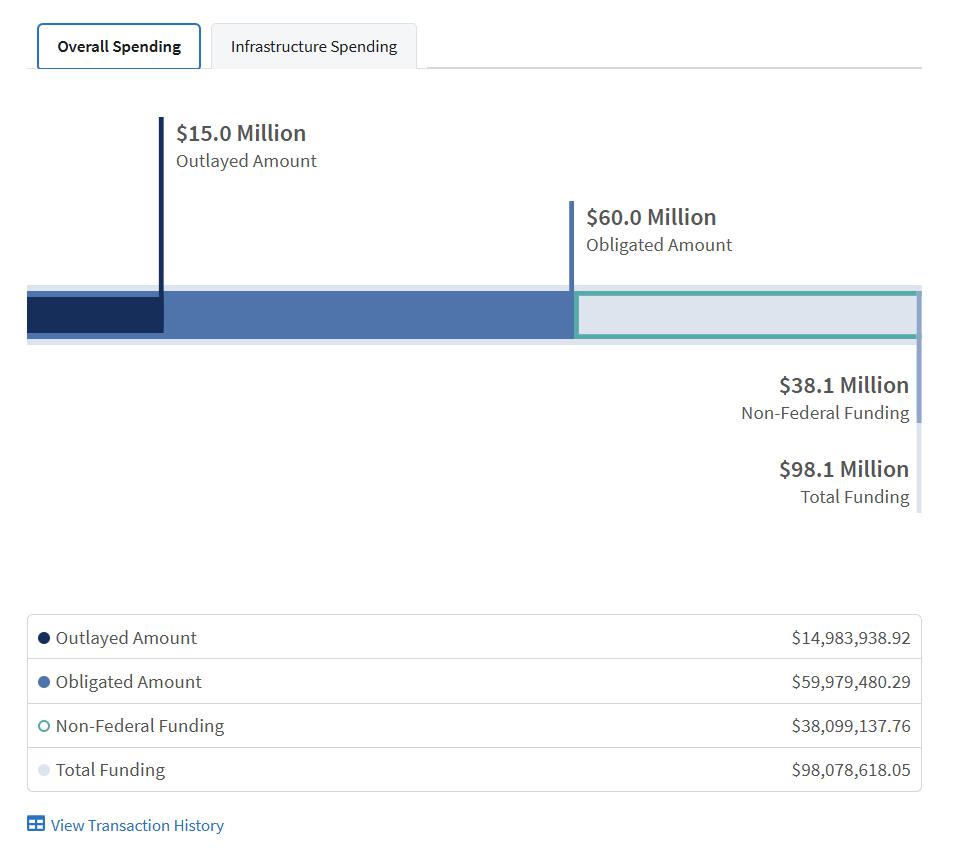
From here, you can also navigate to the profile for the associated federal account and access information on the assistance listings. This information can be used to access higher level obligation and outlay information.